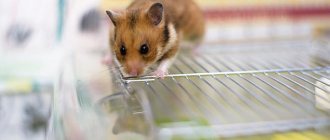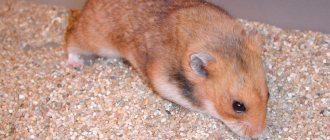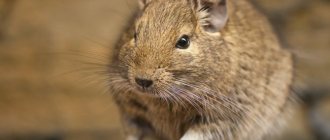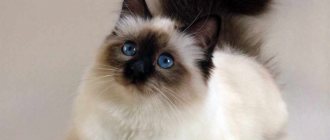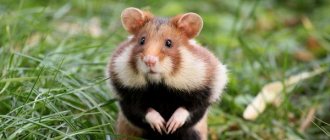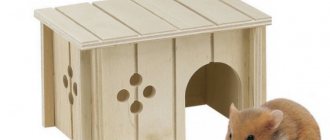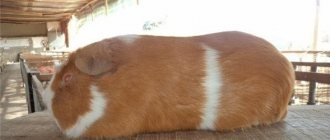Varieties of mini hamsters
Typically, the length of a dwarf hamster does not exceed 5–10 centimeters, and its weight is 45–70 grams. Otherwise they are the same as their larger counterparts. But there are still some distinctive features, for example, kids are hyperactive. In addition, the dwarf category includes several varieties.
Important! Djungarians can change color. In their natural habitat in winter they turn white with a silvery tint.
Djungarian hamster (jungarian)
The most famous dwarf pet. It is distinguished by its gray color, with a dark stripe on its back, and its belly is covered with white hair. These hamsters love companionship and attention.
The size of the jungarik is about 5–10 centimeters, and its weight is only 35–65 grams. The hamster's paws are covered with hair, there is a short tail, a pointed muzzle, and small ears on the head.
Find out also how to breed Djungarian hamsters at home, how long do Djungarian hamsters live on average, how much do Djungarian hamsters cost, what kind of cage should a Djungarian hamster have?
Based on color, domestic Djungarian hamsters are divided into the following types:
- standard - brown-gray with a white belly;
- sapphire - grayish-blue with a whitish belly;
- pearls - matte white with gray streaks;
- tangerine - reddish-cream.
The lifespan of these animals is 2–4 years. Sexual maturity occurs at 4–6 weeks. In nature, dwarfs breed in warm weather, from March to September; in captivity, they are capable of producing offspring all year round. One litter can have up to 11 cubs, and pregnancy lasts 21–26 days.
Taylor's Hamster
The length of this hamster does not exceed 6 cm, while they look quite well-fed and are covered with thick hair. The tail of hamsters is so short that it is almost invisible. The coat color is uneven: the chest and belly are snow-white, and the back and head are brown.
The animals' ears are small, covered with fur and almost merge with the head, the eyes are large, black, with white spots above them resembling eyebrows. The nose is small and pink.
Did you know? Hamsters are very thrifty animals. Under natural conditions, they can store food reserves weighing up to 90 kg.
Taylor's hamsters breed year-round. Pregnancy lasts on average 20–30 days, and a litter may contain 1–5 cubs. Newborns weigh only 1 gram; by the twentieth day, children are already growing up and can live independently. Sexual maturity occurs at 10–12 weeks of age.
Under good conditions, Taylor's hamsters can live 1.5–3 years.
Campbell's hamster
These miniature creatures are the only dwarf hamsters that can have different colors: black, white and even tortoiseshell.
The body of the Campbell's hamster is plump, round, 7.5–10.5 cm long. This dwarf hamster weighs about 25 g. It has a short tail, small pointed ears, and the soles are covered with hair that hides the digital tubercles. The animals have 4 toes on their front paws, and 5 on their hind paws.
Did you know? Because of their short legs, hamsters run poorly. Therefore, sensing danger, they try to hide in a hole or simply lie low. Only large varieties can fight off the enemy.
The readiness to reproduce in females depends on what time of year they were born:
- in winter or spring - 6-9 weeks;
- in summer or autumn - 6-8 months.
On average, pregnancy lasts 18–22 days. In a year, one individual can bring up to 3–4 litters of 4–9 cubs each.
In captivity, Campbell's hamsters live 1–2 years (according to some sources, 9–12 months).
Roborovsky's hamster
This is the smallest representative of hamsters. Its size is 4.5–5 cm. These animals have a small tail, which is almost completely hidden in a fur coat. Adults weigh only 20–25 grams.
The ears of this breed are slightly rounded, set high, and the eyes are bulging and resemble beads. A distinctive feature of the appearance is the white brow ridges, reminiscent of a mask. The animal's hind legs are longer than its front legs, which allows it to develop enviable jumping ability.
Since the Roborovsky hamster is a hairy legged hamster, its legs are covered with tiny hairs. Hamsters' fur is desert-colored - golden sand. Selection has made it possible to obtain individuals of various interesting colors.
Important! When choosing an animal with an unusual color, you should remember that they have poor health.
They do not reproduce very easily; they produce 3–6 cubs in a litter. With good care in captivity they can live 3.5–4 years.
Types of dwarf hamsters
The genus of Hairy-footed hamsters is classified as dwarf. Includes several varieties of rodents: Djungarian hamster, Campbell's hamster, Taylor's hamster, Roborovsky and Siberian dwarf hamster. The weight of adult animals does not exceed 45 g, and their height is 7 cm. They differ from each other in the color of their fur. The Taylor's hamster is gray, the Campbell's is brown, the Roborovsky's hamster is sandy, the Siberian dwarf is light gray, and has a dark gray stripe on the back. The Djungarian hamster is considered the most popular among domestic rodents. The color of the skin is gray, the fur on the tummy is white, and there is a black stripe along the back. It has another feature - changing the color of its fur in winter. The rodent turns from gray to white. But you need to take into account that animals do not always shed at home. The Dzungarik is often confused with the Siberian hamster due to its external similarity.
Choosing and arranging a home
Despite the fact that mini hamsters are significantly inferior to their larger counterparts, this does not mean that a small space and a minimum of amenities are enough for them.
Size and material
Dwarf hamsters are quite mobile, so they will need a lot of space. The housing (cage) for them should have strong, frequent (7-8 mm spacing) metal rods. An ordinary aquarium is also suitable for this. Minimum dimensions - 70x30 cm.
What does a hamster need in a cage?
Hamsters are active animals and love a lot of obstacles in their path, so the cage should have ladders, tunnels, labyrinths and other devices that will allow the pet to cover kilometers. A running wheel (with a diameter of at least 18 cm) would also be useful.
Find out how to choose the right cage for your hamster.
It doesn’t matter what it is made of, the main thing is that the surface is smooth and solid so that the animal does not break its legs in the cracks.
A mandatory attribute is a sleeping house. The hamster will hide there during the day.
The following items are also important:
- drinking bowl for water;
- sand bath for bathing;
- feeder
All equipment must be well secured.
When equipping the floor, give preference to hay, shavings and small sawdust. You can also use ready-made granular fillers, but not cotton wool. You can add finely torn paper to the bedding (but not newspapers and magazines) - the hamster will use it to make a bed in the house.
To prevent the rodent from damaging the house, ladders and other objects, and also to prevent the rodent from breaking its teeth on them, place a piece of chalk or a mineral stone in the cage, on which the animal will grind its teeth.
Important! Make sure that the cage is always locked - the pet can escape and die.
The toilet is an important attribute of a hamster’s home. It is quite possible to teach an animal to use the “conveniences”, but training must begin from childhood.
It is not recommended to let animals go for walks - this can be dangerous to their health. It is better to buy a walking ball, chasing it around the room, the hamster will improve its well-being.
It is also advisable to avoid noise in the room where the hamster’s home is located. Stressful situations will negatively affect the health and life expectancy of your pet.
Rules of care
When purchasing a dwarf hamster, it is worth remembering that for normal development it needs to create certain conditions and proper care. The first step is to select the appropriate cell. Despite the tiny size of a pet, it should be extensive.
The optimal gap between the twigs is 7–8 mm; if the distance is greater, the hamster may escape.
Two-tier cages are becoming more and more popular, but there is a possibility that an overly active baby will fall from the top floor and injure himself.
In addition to the cage, you also need to equip yourself with a running wheel, a rest house, labyrinths, and a drinking bowl. The bedding should be made of sawdust or shavings. Small hamsters are very neat animals; they clean their fur themselves and do not need to be washed. For such procedures, you can place a bath with fine sand or a specially designed filler. There is no need to trim the claws, but if there are curved ones, they need to be carefully trimmed.
When eating solid food, the animal wears down its teeth, and if this is not enough, they can grow quickly and cause discomfort to the animal. To prevent this situation, it is necessary to place a special stone in the cage, on which the hamster will file his teeth.
The cage should be cleaned 1-2 times a week, and the toilet should be cleaned as needed. It’s better to let your baby walk in a walking ball: this way he won’t run away and won’t be able to damage anything.
The diet of small hamsters should be balanced. Their diet must include a special food mixture; it is advisable to give it in the evening, since hamsters are nocturnal animals and are very active at this time. They also eat fruits, vegetables, corn grains, legumes; You can give fish or chicken breast. There should always be fresh water in the drinking bowl. Spoiled remains must be removed to avoid poisoning.
In addition, hamsters should not be given citrus fruits, pomegranate seeds, kiwi, sweet and salty foods, or sausage. You should not feed them bread, cabbage, melon and dairy products.
If you plan to keep a male and female together, they should be of the same breed and young - mature hamsters are prone to aggression.
A pregnant female needs to be provided with a diet rich in proteins and given vitamin supplements. Before giving birth, the female is moved to a separate cage, into which sawdust is added. She makes a nest out of them.
Do not touch newborn babies or scare the hamster - she may eat the babies.
Little hamsters are hairless and cannot see or hear anything. After 25–30 days, they can already be separated: boys and girls separately.
How to care for a hamster
The basic rule of keeping any pet is love and free time. However, we should not forget about the peculiarities of caring for tiny friends.
Grooming
You cannot bathe mini hamsters in the usual sense. And since these animals are clean animals, they are given baths with fine sand or other special filler to care for their fur coats.
Did you know? In the wild, dwarf hamsters hardly drink water. They obtain the necessary moisture from succulent plants.
It is recommended to brush long-haired hamsters daily, since their hair quickly mats and gets dirty, paying special attention to the tummy and hind legs - these are the places where hair mats the most.
If tangles have already formed and cannot be combed out, they are carefully cut off with scissors. Short-haired hamsters are not combed.
Care for claws and teeth
The claws of hamsters generally do not need treatment, but in older individuals they are not worn down enough, so you can see curved or uneven claws on their paws, which cause discomfort to the animal, including during movement. In this case, the claws are carefully trimmed.
Teeth need care the most. If the food is not hard enough to wear down the teeth, they quickly grow and prevent the animal from eating. In addition, too large incisors can injure the oral cavity, as a result the animal refuses food and begins to get sick.
To prevent tooth overgrowth, the pet is given various objects to chew on, ideally the same mineral stone. Only a doctor can correct complex dental situations.
Cleaning the cage
You need to clean your home at least once a week. At the same time, the old filler is replaced with a new one, and all hamster strategic supplies are removed from the house.
Important! For the most part, dwarf hamsters are clean, so there is no specific smell that is characteristic of their counterparts.
But the toilet needs to be cleaned as needed, but at least twice a day.
Diseases of Djungarian hamsters
Although it is an unpleasant topic, no one is immune from illnesses, of which hamsters have quite a lot.
- The most common problem is dislocations and sometimes even fractures of the limbs. As a rule, this happens while playing with a person, but it happens that the animal stumbles in the wheel at high speeds and is simply thrown out of there. If this happens to you, then be sure to go to a veterinary hospital; self-medication is unacceptable;
- Colds and flu. Symptoms: sniffling, sneezing. Oddly enough, it can infect its owner with this virus, and vice versa. Treatment is only fresh vegetables and fruits rich in vitamins to boost immunity. There are no medications as such; pet stores only have vitamin supplements;
- Eye disease. The symptoms are the same as in humans – eyelids sticking together, conjunctivitis. In this case, you need to rinse the infected eye with lightly salted water. If the lens becomes cloudy, it means that cataracts have developed; this cannot be cured;
- Sick teeth. Symptoms: the animal suddenly stopped eating. In rare cases, the front teeth simply grew too long. There is advice that they can be trimmed with simple nail clippers, but it is still better to go to a veterinary hospital. If he just broke an incisor, don’t worry, they will grow new ones quite quickly. They do not have caries;
- Problems with wool. Symptoms: hair falls out in clumps. Your hamster may have contracted eczema. It is also possible to be allergic to something in the cage. Professional help from a veterinarian is required; he will prescribe a course of antibiotics.
Dental check
What to feed
In fact, hamsters are omnivores, but this does not mean that you can feed them everything. Rodents must have their own diet.
What is possible
A miniature pet will consume no less food than its larger counterparts. Therefore, you should take care of a varied diet.
So, dwarf hamsters can be given:
- grain mixtures;
- fruits and vegetables (carrots, apples, pumpkin, zucchini);
- seeds;
- corn;
- nuts;
- white bread crackers;
- legumes;
- cereals;
- fresh dandelion and clover leaves.
For proper development, you can also give animal protein (boiled chicken breast and fish, insects, mealworms) in small quantities. Nutritious feed mixtures are given to hamsters for dinner, and low-calorie foods are offered for breakfast.
In addition, you need to make sure that there is fresh food in the feeder. An empty feeder tells the hamster that it needs to prepare supplies for the winter.
What not to do
Under no circumstances should you give dwarf hamsters the following foods:
- salty, smoked, spicy and sweets;
- sausages;
- canned food;
- exotic fruits: citrus fruits, kiwi, pomegranate and their seeds;
- fresh bread and bakery products;
- watermelon, melon, cabbage;
- spicy herbs;
- dairy products.
CARE AND MAINTENANCE OF Dwarf HAMsters
Caring for dwarf hamsters
What does a hamster need? Water, food, clean housing and games that he will provide for himself, with a little help from you. Install a sand bath in the cage so that the hamster can take care of his coat on his own, because he is not allowed to swim in water. Thanks to cleanliness, you can clean the cage once every two weeks, but if you are a neat person, once a week will not harm. These babies have a fast metabolism, which is why they are such gluttons! The food should be varied, feed it several times a day, including various treats.
Various dry foods, wheat, wheat, seeds, oats, and nuts are suitable for feeding a hamster From fruits and vegetables you can give apples, carrots, pumpkin, zucchini, tomatoes, bananas. You can also add protein foods such as low-fat cottage cheese, boiled chicken or rabbit meat, grasshoppers, boiled chicken eggs to the diet By the way, to prevent your pet from getting poisoned, throw away all food, of course, except dry food, at the end of the day, not forgetting to check the house, since they like to drag everything there for storage. Do not give hamsters sweet, salty or peppery foods under any circumstances, and they should not eat any exotic fruits either!
Keeping dwarf hamsters
To keep a hamster, you will need a spacious cage, which you can buy at any pet store or make yourself, with several floors. Of course, they sell two-story ones, but you can also make a three-story or four-story cage, which will undoubtedly please your pet, because he will have much more space to play, and, you see, raising hamsters in a small cage is not very convenient. Place one or two houses, a wheel, a feeder and a drinking bowl in the cage, and put sawdust on the bottom. That's all you need for your little pet. Want to learn about interesting gadgets for hamsters? Watch the video below!
Age and gender
First of all, you should not buy an adult or newly born hamster. The animal must be at least 3 weeks old and no older than 3 months of age. If he is at most 2 weeks old, then he has not yet learned to feed on his own, so most likely he will not live long with you. Small hamsters are the easiest to handle. At the same time, it is more difficult to tame a female. Typically, males behave calmer and in terms of noise level are significantly inferior to the always active female.
If you buy a hamster, it should be no older than two months, otherwise there is a high chance that you will buy a pregnant female. And caring for it involves significant hassle, from selecting food to increased hygiene. In addition, later you will have to solve the problem of the offspring that appear.
How to choose a hamster of a certain gender? There are quite obvious gender characteristics that will help you with your choice. As a rule, males are calmer than females, their lower abdomen is more arched. In this area, hamsters have two characteristic holes. In females they are located closer to each other, in males they are further apart.
